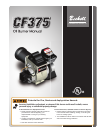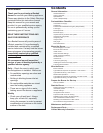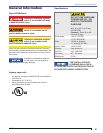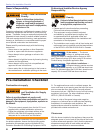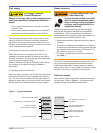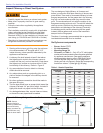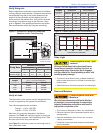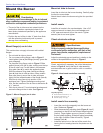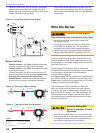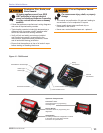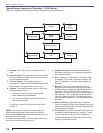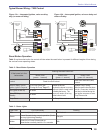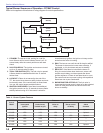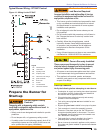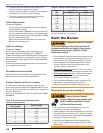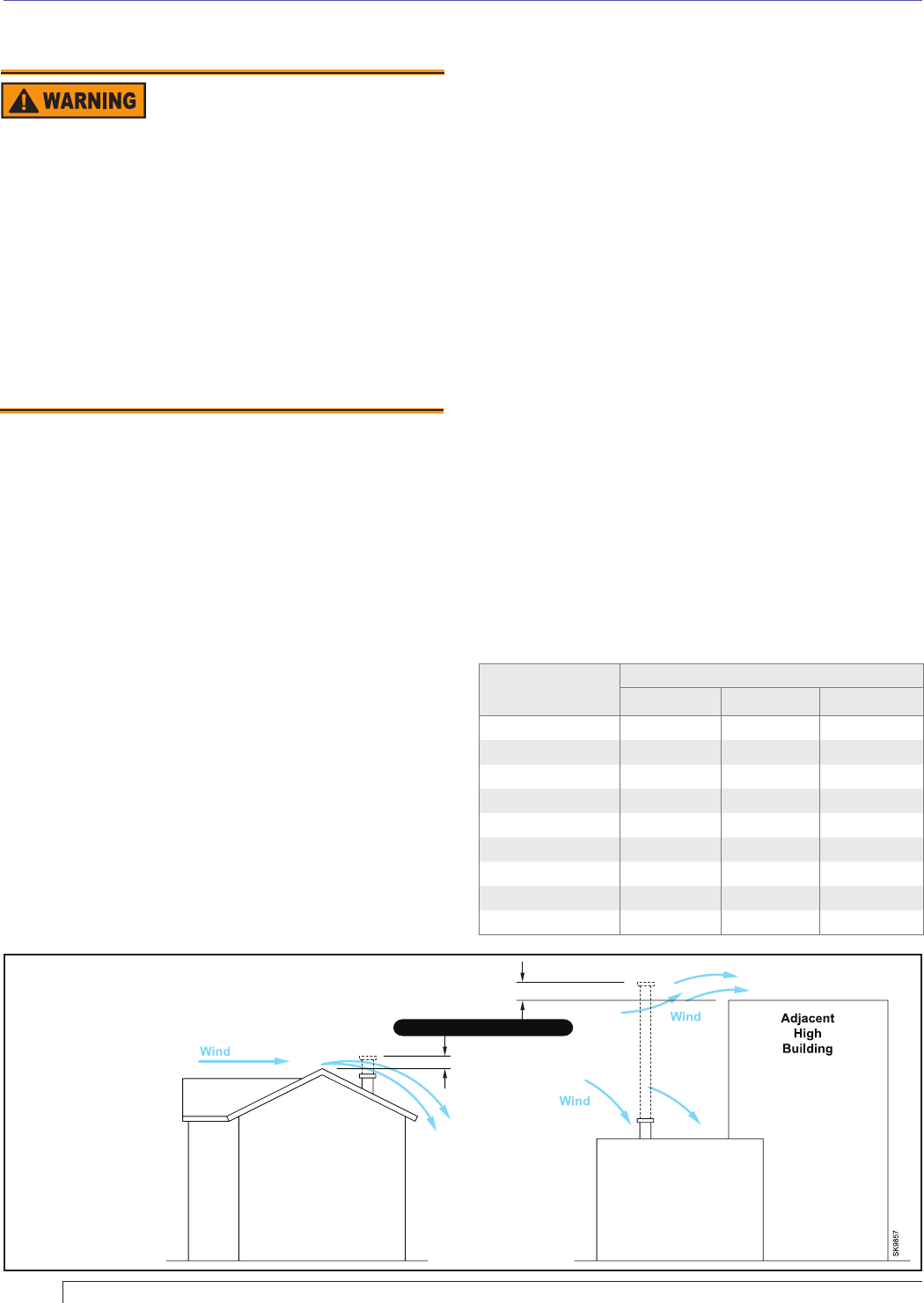
6
Inspect Chimney or Direct Vent System
Table 1 - Nozzle Capacities
Rated gph @
100 psig
Pressure - pounds per square inch
125 140 150
1.35 1.51 1.60 1.65
1.50 1.68 1.77 1.84
1.65 1.84 1.95 2.02
1.75 1.96 2.07 2.14
2.00 2.24 2.37 2.45
2.25 2.52 2.66 2.76
2.50 2.80 2.96 3.06
2.75 3.07 3.25 3.37
3.00 3.35 3.55 3.67
Section: Pre-Installation Checklist
Starting with minimum gph fi ring rate, the minimum
size recommended is 6” fl ue pipe with 8” X 8”
inside chimney, unless specifi ed otherwise by the
appliance manufacturer.
A chimney fl ue shall extend at least 3 feet above
the highest point at which the chimney comes in
contact with the roof, and not less than 2 feet above
the highest roof surface or structure within 10 feet
horizontally of the chimney. Refer to Figure 2.
Any accumulation of soot or debris in chimney
offsets should be removed
Any obstructions such as a protruding joint or a
piece of broken tile wedged in the chimney should
be removed.
No other appliance connection should be made to
the same fl ue pipe.
The fl ue pipe should have an upward pitch toward the
chimney of at least 1/4” per foot of length. It should fi t
tightly and should not project into the chimney.
Any leakage between tiles, around clean-out doors,
or around the vent pipe should be sealed.
1.
2.
3.
4.
5.
6.
7.
Fire, Smoke & Asphyxiation
Hazard
Carefully inspect the chimney or exhaust vent system.
Make sure it is properly sized and in good working
condition.
Follow the instructions supplied by the appliance
manufacturer.
The installation must strictly comply with all applicable
codes, authorities having jurisdiction and the latest
revision of the National Fire Protection Association
Standard NFPA 31 for the installation of chimneys and
vent sizing, (or CSA-B139 and CSA-B140 in Canada).
Regulation by these authorities take precedence over
the general instructions provided in this manual.
y
y
y
y
y
Verify burner components
Burner, Model CF375
Air tube assembly
Mounting fl ange kit
Oil nozzle, per Table 1 — Only 45° to 70° solid pattern
nozzles are recommended unless otherwise specifi ed
by appliance manufacturer. (See specifi c appliance
recommendation sheet or refer to OEM Spec Guide).
Find the required fi ring rate in the 140 psig column
(factory-set fuel unit pressure). Select the corresponding
nozzle from column 1 (Rated gph @ 100 psig).
○
○
○
○
INSULATED STAINLESS STEEL CHIMNEY LINERS
The new designs of high effi ciency oil furnaces and
boilers in conjunction with fl ame retention oil burners are
more effi cient. One result of increased effi ciency is lower
fl ue gas temperatures. As fl ue gases rise in the chimney,
they will cool and condense when they reach the dew
point. The condensation will mix with the sulphur in the
fl ue gases creating sulphuric acid. The acid will attack the
chimney mortar, brick and clay liners causing corrosion,
deterioration and blockage of the chimney. Eventually
the blockage could prevent exhausting the fl ue gases.
Instead, the fl ue gases could vent out the barometric
damper into the living space.
Therefore, it is strongly recommended that an approved
insulated stainless steel liner be installed.
Figure 2 - Chimney Design - Above the Roof
Minimum Clearence: 2 FT.
NOTE: Correct
chimney design is
shown by dotted lines.
Incorrect chimney
design, as shown by
the solid lines, may
result in down-drafts.



